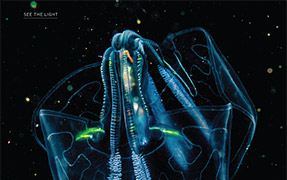Measuring baggage screener performance using 3D fictitious threat images
Passenger belongings have been manually screened using 2D x-ray systems at most large airports throughout the world for almost 40 years. Given the high volume of passenger bags during peak rush hours, and the inherently stressful and occasionally chaotic environment of the security screening area, the quality of baggage screening sometimes fails to meet expectations.
In the late 1990s, the Federal Aviation Administration (FAA) formulated an approach to maintain screener quality and consistency for the nation's airports. The FAA plan called for the integration of a dynamic quality measurement system into the screening equipment to assess performance of screeners while doing their jobs. This built-in quality measurement system was specified to randomly display fictitious threats, such as knives, guns, and explosives, to the screeners. Measurement of a screener's performance was to be based on his correct responses to the display of fictitious threat images. In fact, this measurement system for 2D x-ray imaging machines has proven to be a viable approach for maintaining screener vigilance for threats.
Currently, there are two methods for threat image projection (TIP): combined threat image (CTI) and fictitious threat image (FTI). The CTI method uses a whole-bag approach, that is, an image of an entire bag with a fictitious threat is presented to the screener, whereas the FTI method overlays a threat image on the existing x-ray image of a passenger's bag. In most cases, the screeners can see the bags being scanned. Thus, the FTI method is preferred because the images are consistent with the bags being screened. The CTI method, on the other hand, may display inconsistent images.
In the years after the 1988 bombing of a Pan Am flight over Lockerbie, Scotland, the FAA funded explosive detection systems (EDSs) based on 3D baggage-screening technologies. EDSs were designed to automatically detect specified minimum amounts of certain explosives. After the horrific events on 9/11, new policies were implemented in every US airport that required all checked baggage to be inspected following strict Transportation Security Administration (TSA) protocols for screening explosives. Since then, some 3000 EDSs have been installed worldwide.
CTI-type approaches for TIP were developed for early EDS machines and applications were tested in two types of installation configurations. CTI TIP was unsuccessful in both types. In response, the TSA funded an investigatory development of a 3D FTI TIP system for EDSs. They relied on one of the larger security companies for development of the TIP algorithm. However, this system failed as well due to visual imaging artifacts that were obvious to screeners when a threat object was merged into existing bag data. From the point of view of the TSA, the preferred FTI TIP method for 3D EDSs appeared implausible, and the CTI TIP method with its whole-bag replacement procedure was deemed deficient.
Subsequent research and innovation stimulated our ideas for a new design in which a 3D FTI TIP system for EDSs could be realized. Our novel approach1 uses projection space to manipulate and merge objects, and then transforms modified data into image space. First, we define threat objects to be added to a bag in image space, then transform the threat into projection space to correct scanner anomalies such as beam hardening and photon starvation. The threat in projection space is transformed back into image space, adjusted for streaking anomalies, and normalized to its geometric center. At this point, the image represents an ideal threat image from an ideal scanner. We then review bag projection data for an empty or very low absorption location in which the threat can be placed. If none is found, an object of similar size is identified using a projection segmentation algorithm and subsequently removed. Once an empty space is located, the orientation for the threat is determined. The threat is rotated about the geometric center of the image and then translated to match the corresponding bag's empty space. Checks and adjustments for sensible placements also occur in this phase.
The modified threat image is transformed back into projection space, adjusted for scanning anomalies, and then added to bag projection data. Next, the summed data is checked for consistency and adjusted to match the original scanning parameters. The summed projection data is then transformed into image space yielding an image of the original bag with an added fictitious threat. An advantage of this approach is that there are no noticeable artifacts indicating a fictitious threat.
We modeled this concept and demonstrated that 3D FTI TIP images are indistinguishable from those of real bags (see Figures 1 and 2). Thus, we have shown that it is possible to integrate a reliable TIP system with 3D EDS machines to maintain high-quality screening of checked baggage. In the future, we will refine our prototype for eventual integration into a scanner that the TSA can use and will design both a TIP scheduler and administration system.





